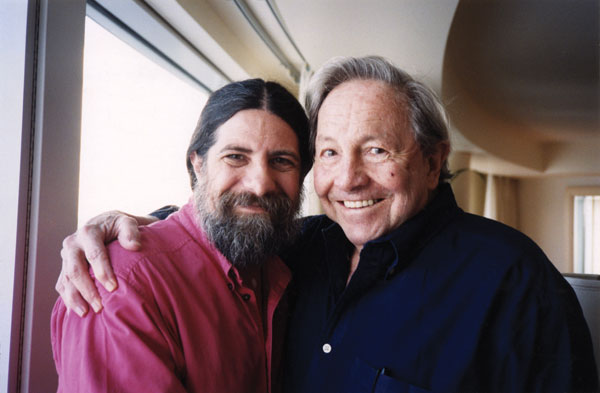
Christopher Rauschenberg and Robert Rauschenberg
The Robert Rauschenberg Foundation is challenging a Florida judge’s $24.6 million award to three friends of the artist for overseeing his estate.
Christopher Rauschenberg, the foundation’s chairman, said he and other directors felt a responsibility to file the notice to appeal, on Wednesday, August 13. “Our job is to advance the best interests of the foundation and its charitable mission,” he said in a statement.
A year ago, Christopher Rauschenberg was quoted in the New York Times saying, “If a judge says $60 million is fair, we’ll put it behind us and continue with the charitable stuff.” Late last night, he said the foundation had “serious concerns” about Florida Judge Jay Rosman’s August 1 decision in Fort Myers. “Ultimately we will of course respect the rulings of the court system.”
The foundation provides residencies to artists on Captiva Island, Florida, and makes grants to arts and environmental organizations. In the next month, it will be announcing new grants “at the intersection of arts and issues” and a program to support “emerging curators,” it said in a statement.
Rauschenberg died in 2008, at age 82. The three trustees of the Robert Rauschenberg Revocable Trust had originally sought a fee of $60 million. At trial, they reduced their request to between $51 and $55 million. The foundation, the prime beneficiary of the trust, argued that $375,000 divided among the three was fair.
The trustees are Darryl Pottorf, an artist who assisted and lived with Rauschenberg for over 25 years; Bennet Grutman, the artist’s accountant for 18 years; and Bill Goldston, a Rauschenberg business partner with a fine art print publishing company. As they had split $8 million in fees, the judge ordered they were entitled to another $16.4 million, totaling $24.6 million. They developed a plan to withdraw Rauschenberg works from the market when he died, “to prevent a decline in value from speculators or collectors flooding the market with his art,” Judge Rosman wrote. He cited appraisals that the value of assets soared from $606 million in 2008 to $2.2 billion four years later.